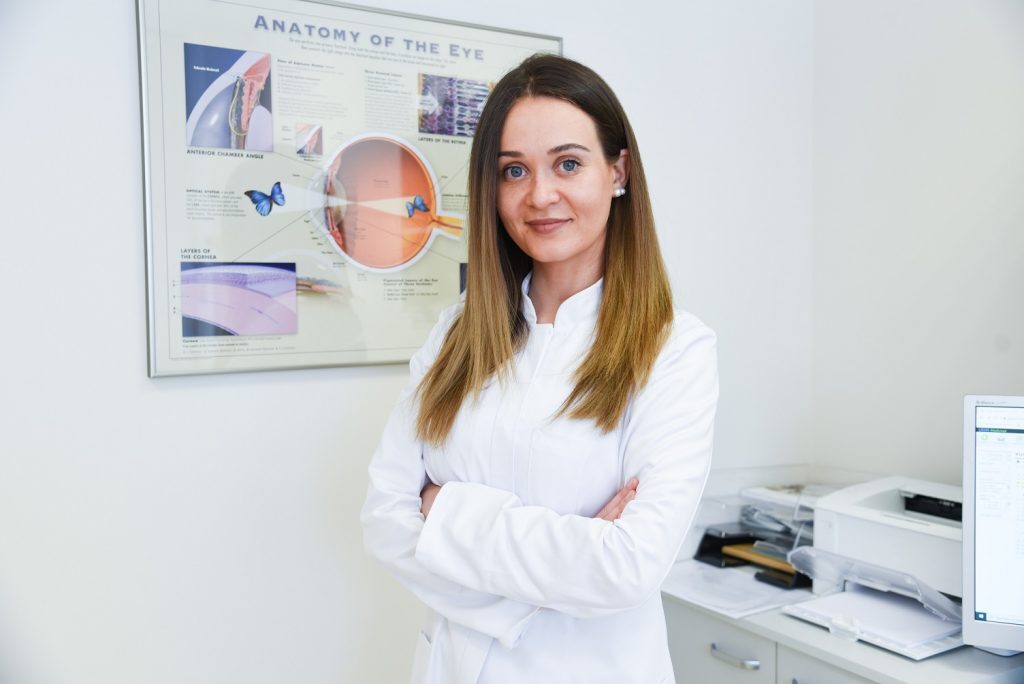The extremely fast-changing climate, the emergence of diseases that we have not seen before, and the constant pollution of the air and oceans are just some of the consequences of excessive consumption. Every day, without thinking, we use hundreds of items that contribute to global pollution in the long run – glasses and contact lenses are no exception.
Every year, the human population consumes about 300 million tons of plastic, of which 50 per cent is disposable plastic that includes daytime lenses and spectacle parts. Plastic decomposes up to 500 years, and more than 8 tons end up in the oceans each year. 90 per cent of plastic chips are found in the stomachs of seabirds, and 1 in 3 mammals are found surrounded by ocean debris – the numbers are shocking.
The issue of recycling is still unresolved
According to Eglė Juzėnaitė, an ophthalmologist at the Lirema Eye Clinic, a person with visual impairments has an average of three pairs of glasses during the span of his life: regular vision-correcting, reading and polarised sunglasses. If vision changes or glasses are not being taken care of, vision correction tools may need to be changed even more frequently.
“By saving natural and energy resources, it is encouraged to transfer unnecessary items to others and dispose of those no longer suitable for use according to the rules. The glasses are usually made of different materials – frames made of plastic, aluminium, steel or gold – which makes it very difficult to recycle them,” says the doctor.
Glasses collected and transferred to third parties are also rarely adapted. It is believed that handing over old glasses to a new wearer saves them money. However, the cost of delivery is often forgotten. First of all, the glasses must be collected and transferred to the collection point from where they are transported nationwide. The glasses are then selected and inspected, cleaned, sorted, labelled, sent to the recipient and stored before use.
“This process requires high costs for transport, energy and human resources. Studies show that only 7 per cent of glasses can be reused because not only diopters need to be taken into account when choosing glasses – the comfortable, face-appropriate shape of the glasses, the size of the glass and its thickness are critical. It isn’t easy to match them precisely. In this way, the unit price doubles compared to a new pair of glasses,” claims E. Juzėnaitė.
Contact lenses also contribute to pollution
Although lenses weigh just 0.03 milligrams, they account for as much as 0.5 per cent of all global waste.
At first glance, long-wearing lenses may seem to be a better choice than one-day lenses, which require 365 pairs a year, but that’s a myth. One-day lenses, including their paper packaging, container and foil, generate about 1 kilogram of waste annually, and reusable lenses, including their liquid, cause about 0.87 kilograms of waste. This waste does not include those used to deliver lenses to sales points or recipients who have ordered them online.
According to E. Juzėnaitė, glasses and contact lenses are sorted according to the recycling marks visible on the packaging. If there are no such signs, then they should be thrown in general waste containers. Optics generally do not accept glasses or contact lenses intended for emission.
“Lenses disintegrate extremely fast when they come into contact with microbes from biological wastewater treatment plants, so when they are flushed down the toilet, they turn into microplastics,” says the doctor.
Laser correction – a sustainable choice
Vision correction is not limited to only glasses or contact lenses wearers. If the patient has myopia, farsightedness, or astigmatism problems, laser vision correction can also help the situation.
“This procedure is swift, efficient, long-lasting and economical. During the procedure, instead of the standard analgesic permit or drip, eye-inducing drops are used. This makes the operation easier for the patient, and we pollute with less medical waste,” says E. Juzėnaitė.
According to the microsurgeon, Lirema Eye Clinic collaborates with one of the oldest and leading manufacturers in the medical optics and lasers industry – “Schwind-eye-tech solutions” and “Carl Zeiss AG”. These companies make every effort to develop sustainable, environmentally friendly products. During surgery, the laser works for just a few minutes, after which the patient can live an entire life without additional vision correction measures. Usually, one procedure is enough to restore vision. However, if needed, the procedure can be repeated.
“Each of us can choose the method of vision correction – whether it is laser vision correction, glasses or contact lenses – after choosing and using the latter, it is necessary to dispose of them properly. It depends on everyday choices in what condition we will leave the planet for future generations”, the doctor concludes.
You may get a free online consultation if laser eye surgery is right for you here.
